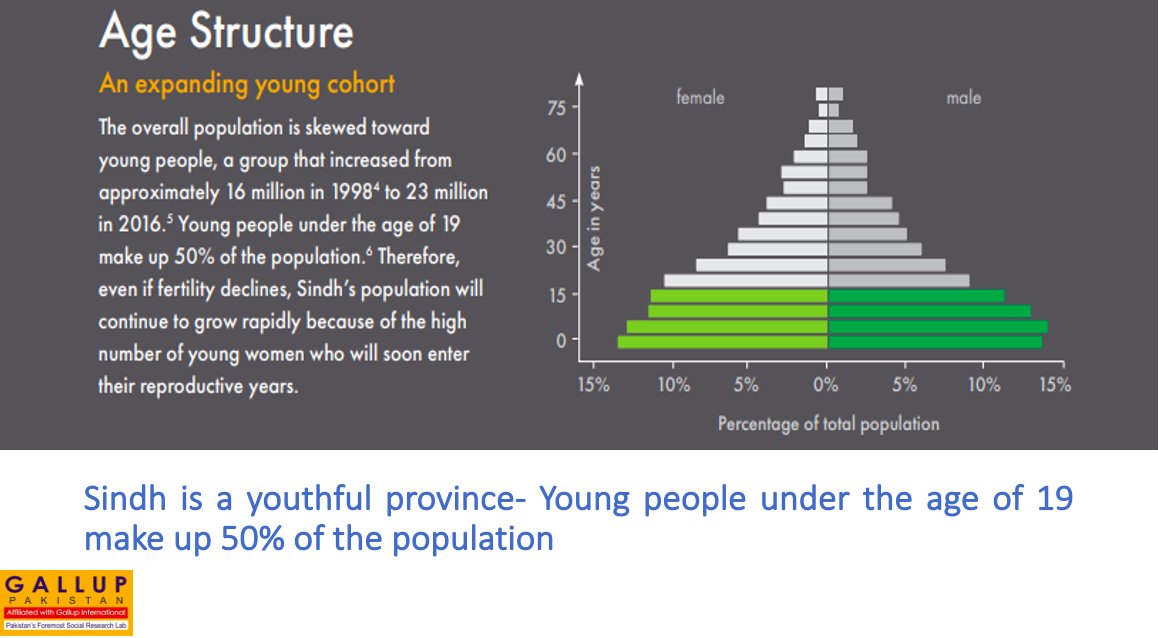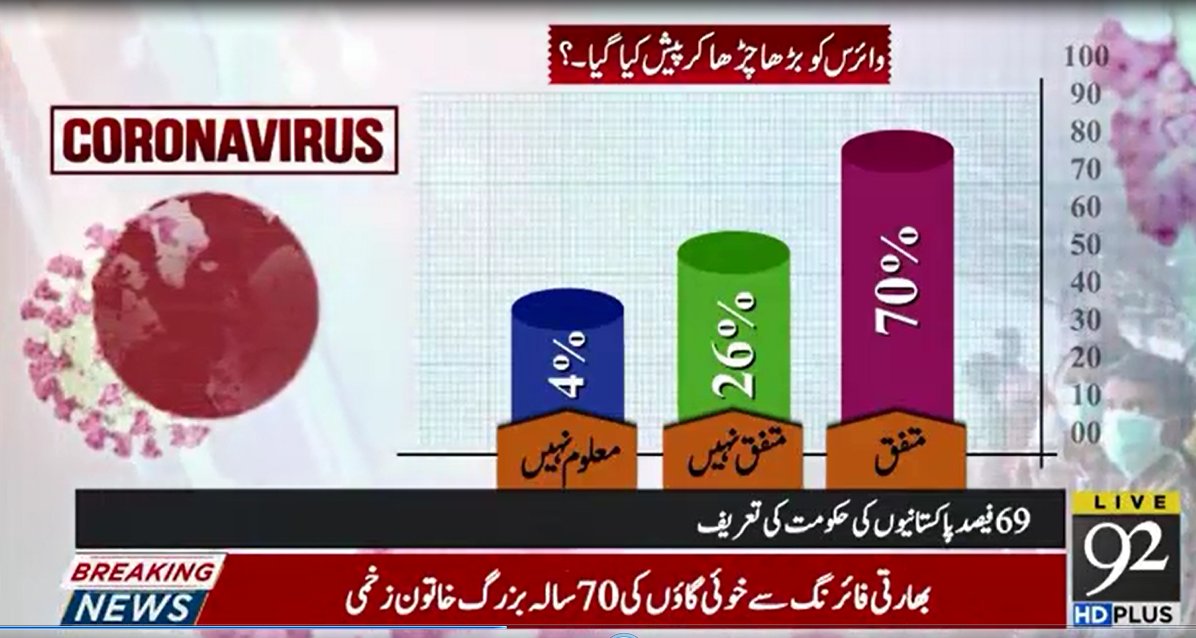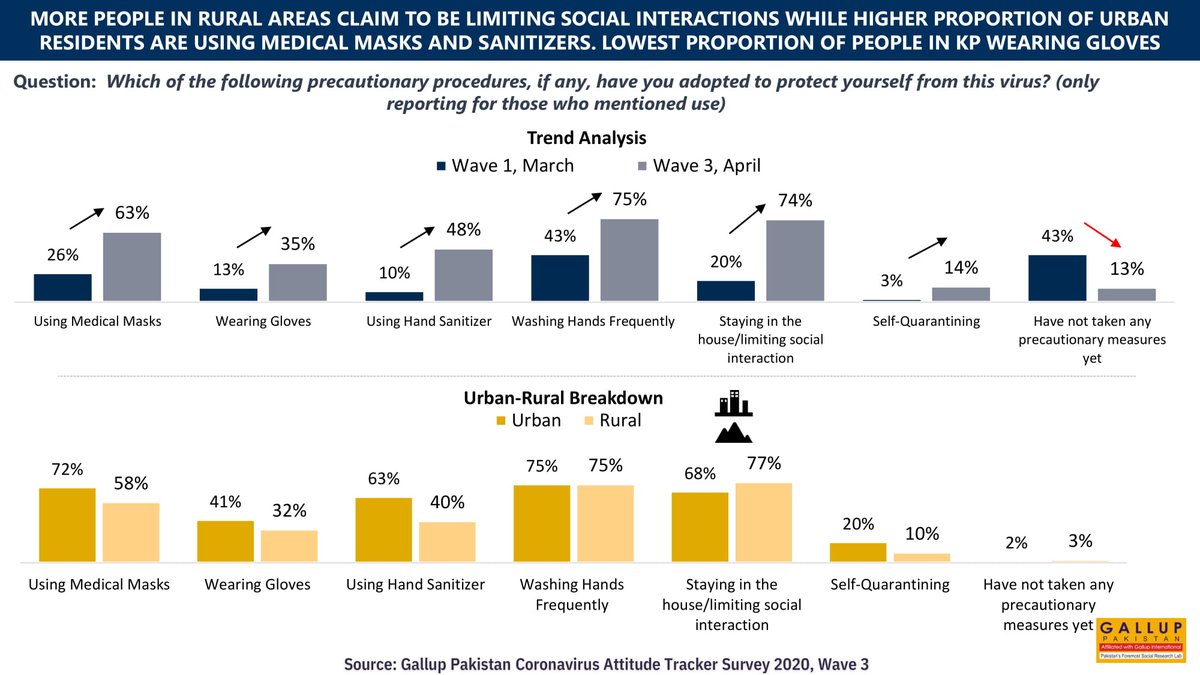
Gallup Pakistan is a leading survey research agency, and a specialist in independent third party evaluation and ratings. Est.1980
How to get URL link on X (Twitter) App


 Key findings:
Key findings: 


 This study used 4 short #VR #experiences to investigate whether improvements in #urban #design elements of a #public #park would increase willingness to use it, and whether exposure to #diversity would improve #social #cohesion.
This study used 4 short #VR #experiences to investigate whether improvements in #urban #design elements of a #public #park would increase willingness to use it, and whether exposure to #diversity would improve #social #cohesion.












 58% of the firms in Pakistan have either checking or savings accounts. Pakistan ranks 6th among the 7 South Asian countries while Bhutan ranks 1st with (93%) firms having checking/saving accounts.
58% of the firms in Pakistan have either checking or savings accounts. Pakistan ranks 6th among the 7 South Asian countries while Bhutan ranks 1st with (93%) firms having checking/saving accounts.
 Nearly 1 in 4 Pakistanis (22%) now report relying on less preferred and less expensive food items to cover basic household needs
Nearly 1 in 4 Pakistanis (22%) now report relying on less preferred and less expensive food items to cover basic household needs

 Respondents in the 30-39 age cohort were most likely to report suffering from fever (20%) and sore throat (16%). 90% of those in the most vulnerable group (50+) did not feel any illness.
Respondents in the 30-39 age cohort were most likely to report suffering from fever (20%) and sore throat (16%). 90% of those in the most vulnerable group (50+) did not feel any illness. 

 "Systematic evaluation and measurement of government campaigns is a crucial instrument that is less often used in Pakistan. Survey results can potentially create an audience for such evaluations." - @bilalgilani
"Systematic evaluation and measurement of government campaigns is a crucial instrument that is less often used in Pakistan. Survey results can potentially create an audience for such evaluations." - @bilalgilani 
 @bilalgilani #PakistanEducation #remotelearning #onlineeducation #CoronaInPakistan #Covid_19 #COVIDー19 #CoronaVirusUpdates
@bilalgilani #PakistanEducation #remotelearning #onlineeducation #CoronaInPakistan #Covid_19 #COVIDー19 #CoronaVirusUpdates


 Pakistanis most likely to report losing their job (68%) or a serious part of their income (84%) during the covid-19 crisis. Japanese & Germans are least likely to report the same.
Pakistanis most likely to report losing their job (68%) or a serious part of their income (84%) during the covid-19 crisis. Japanese & Germans are least likely to report the same.


 Respondents from Italy and Philippines (31%) are least hopeful about the world returning to its pre-crisis state after the pandemic is over. Pakistan ranks 10th out of 17 countries in terms of hope
Respondents from Italy and Philippines (31%) are least hopeful about the world returning to its pre-crisis state after the pandemic is over. Pakistan ranks 10th out of 17 countries in terms of hope 

 Highest level of satisfaction with government performance observed among females (87%) and young people (87%)
Highest level of satisfaction with government performance observed among females (87%) and young people (87%) 


 @PTAofficialpk
@PTAofficialpk

 More people in rural areas claim to be limiting social interactions while higher proportion of urban residents are using medical masks + sanitizers. Lowest proportion of people in KP wearing gloves.
More people in rural areas claim to be limiting social interactions while higher proportion of urban residents are using medical masks + sanitizers. Lowest proportion of people in KP wearing gloves. 